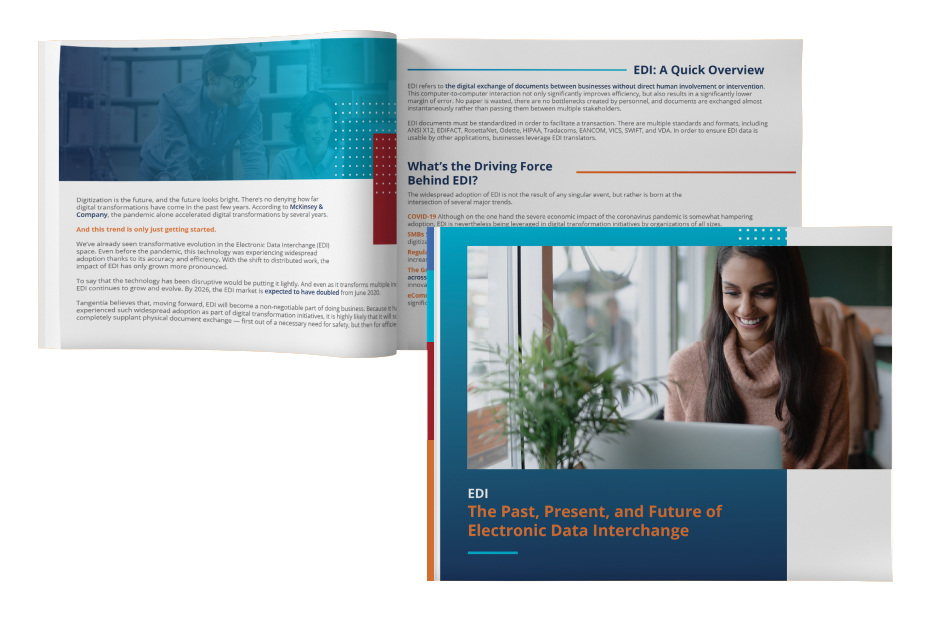What is an Order Management System (OMS)?
An OMS is a centralized software platform that automates the entire order management process, from purchasing and sales through inventory tracking to order fulfillment and shipping.
What does an OMS do?
An OMS integrates all internal applications related to order management. This makes it possible to consolidate and synchronize information from multiple channels into a single hub, streamlining order processing and freeing up staff to focus on the customer, rather than the data.
What are the benefits of an OMS?
An OMS offers many benefits that will have your order management processes running smoothly in no time. Among these are increased accuracy at lower costs, but that’s just the beginning. Additional benefits of an OMS affect every aspect of order processing, making it easier for everyone involved.
Increased Visibility
An OMS provides full visibility into and control over every aspect of an order throughout its lifecycle. This includes the ability to monitor, track and modify an order in real-time.
Real-Time Inventory Control
34% of businesses ship products late due to inventory inaccuracy. An OMS can eliminate this issue by providing a view of current stock, inventory in transit, and demand levels in real-time.
Streamlined Order Management
With omnichannel capabilities, information from multiple channels will be gathered and consolidated, streamlining the navigation of even the most complex supply chains.
Customized Integrations
An OMA integration can be tailored based on your company’s unique needs, ensuring seamless integration with your ERP/Accounting system, WMS system, shipping services and more.
Enhanced Customer Experience
With an OMS, the entire order lifecycle is fine-tuned. Customers can place their order with ease and receive it on time, every time, and will experience improved customer engagement.
Accurate Delivery Scheduling
With real-time insight into inventory, skills and available resources, delivery schedules can be accurately generated to maximize resources and get orders out efficiently and on time.
DOWNLOAD WHITEPAPER
The Past, Present, and Future of Electronic Data Interchange
What transformative tasks can an OMS perform?
An OMS focuses on accessing information from every point along the order lifecycle to provide seamless order management through tasks such as:
- Extracting information from multiple channels
- Automating the data entry process to eliminate errors
- Updating product availability and information in real-time
- Generating and maintaining an up-to-date customer database
- Transferring all order management data directly to the accounting system
- Tracking KPIs, highlighting sales patterns and providing sales forecasts
This level of automation reduces the amount of human error involved in the processing of orders and ensures you know precisely what is going on at every moment and at every point along your order lifecycle.
What is my OMS journey?
The adoption of an OMS should involve your business and IT leaders working together to identify how an OMS can provide the maximum benefit for your organization. This should involve creating an implementation roadmap and a cost/benefit analysis so you can make your business case of OMS implementation.
- Develop a business case for OMS adoption
- Decide on a timeframe for OMS implementation
- Determine the best model for OMS operations
- Develop an OMS governance plan
- Establish total cost of ownership
- Identify the end goal of OMS implementation
Click here for more information on getting started with OMS.
Where is the OMS being used?
OMS adoption is being seen in a variety of industries that rely on placing and fulfilling orders. Industries using the OMS technology include:
What Our Customer Say
See how these companies are using OMS & EDI to improve their operational efficiency from top to bottom:
IBM Sterling
Order Management System
Keeping track of essential order management challenges requires a robust solution that’s designed to meet and improve key business processes and customer expectations. The IBM Sterling OMS gives your organization everything it needs to create streamlined order management processes, better visibility for inventory and service availability, and more—within a streamlined platform.
Additional Frequently Asked Questions About OMS
Related Order Management Systems Resources













